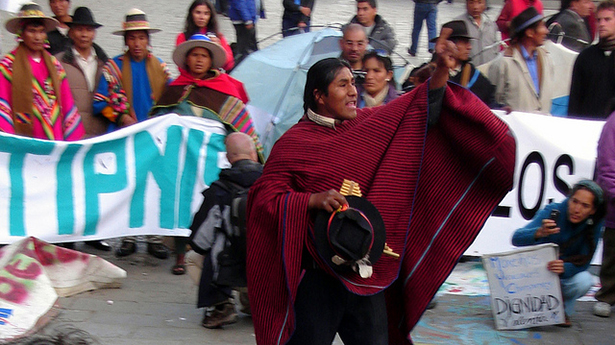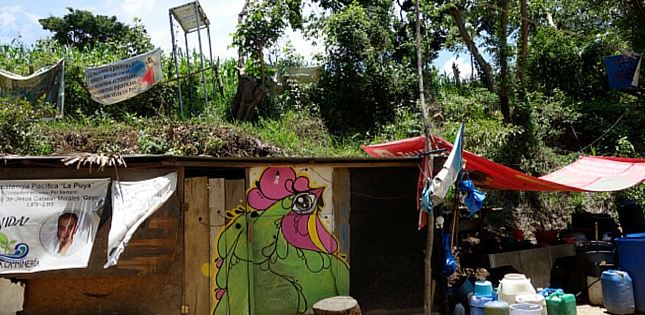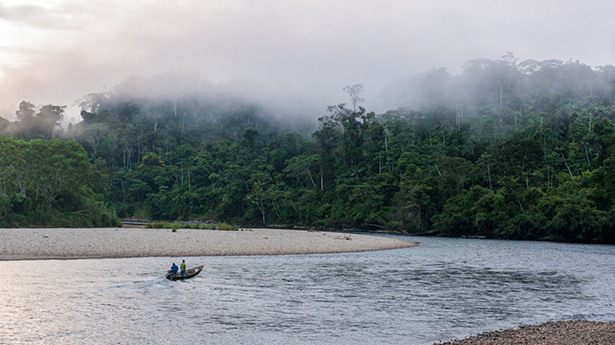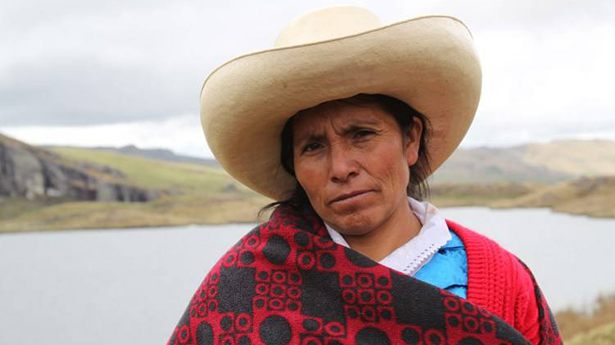In true David vs. Goliath style, Máxima Acuña, a 47 year-old Peruvian subsistence farmer and mother of four, stood up to Newmont Mining Corporation, owner of some of the world’s largest and most lucrative gold mines. Máxima refused to sell the 60-acre plot of land to Newmont’s local venture Yanacocha. Despite being sued by the mining company and having her house destroyed, she effectively stalled development on the proposed Conga mine, protecting a nearby lake, Laguna Azul, from becoming a waste storage pit, and protecting five watersheds and a high altitude biologically diverse wetland. For her actions and resilience, Máxima is one of six recipients of this year’s Goldman Environmental Prize.
In light of this incredible show of resistance in Peru, we’d like to highlight a handful of ways Global Greengrants’ grantees are challenging the development of large-scale mining taking place throughout Latin America.
Protecting Forests and People in Bolivia

Bolivia is home to the highest percentage of indigenous peoples in Latin America. As the Bolivian government has increased the sponsorship of large-scale mining and other development projects, pristine forests and the livelihoods of rural indigenous communities are threatened by the construction of miles and miles of road development. In 2011 Bolivian President Evo Morales approved the construction of a 182-mile highway running through the Isiboro Secure National Park and Indigenous Territory, known as the TIPNIS. Thousands of people took to the streets and marched 375 miles from deep in the Amazon to the capital of La Paz, protesting the road, which would damage this highly biodiverse indigenous territory. The march successfully changed public opinion about the road, and President Morales put a hold on the project. Unfortunately in June 2015, construction of the TIPNIS highways resumed. Read the full story here.
Taking a Stand in La Puya, Guatemala

In 2011, Nevada-based Kappes Cassiday & Associates sought a permit to build an open-pit gold mine called El Tambor near La Puya, Guatemala. Villagers opposed the mine, knowing that it would contaminate their water sources and destroy their agriculture. In 2012, local resident Estela Reyes blocked the road with her car, intending to block equipment from reaching the mine. Other members of the community joined her. Together, they maintained the blockade and halted construction on the mine until May 2014, when the National Police tear gassed the protestors and forcibly removed them from the street, allowing the mine to continue. Subsequently, the community won a court order suspending construction of the mine. The company ignored the order, and locals still maintain a symbolic presence at the blockade while they wait for the ruling to be enforced. Read more here.
Protecting Sacred Spaces: Ecuador’s Cordillera del Condor

In southeast Ecuador, the Shuar people, a legendary tribe of the Amazon never conquered by the Spanish, live in a place of incredible biodiversity known as the Cordillera del Condor. Their homeland, for which they depend on for subsistence farming and fishing, is being threatened by the development of large-scale gold and copper mines. One of which is the Mirador Mine, an open-pit copper mine being built by a Chinese corporation. The Shuar say that they have never been consulted or given consent for the mine projects, a violation of national and international law. Global Greengrants is working with the Shuar to combat these threats and learn more about the risks associated with mining. Read more here.
Today, large-scale mining projects continue to threaten some of the most biologically diverse environments on the planet and the indigenous communities that call those places home. Luckily, these communities are putting up a strong fight, and working together to protect extraordinary places and ways of life.
Photos from top: Goldman Environmental Prize, Pablo Andres Rivero/ CC BY-NC-ND 2.0, Global Greengrants, Beth Wald

